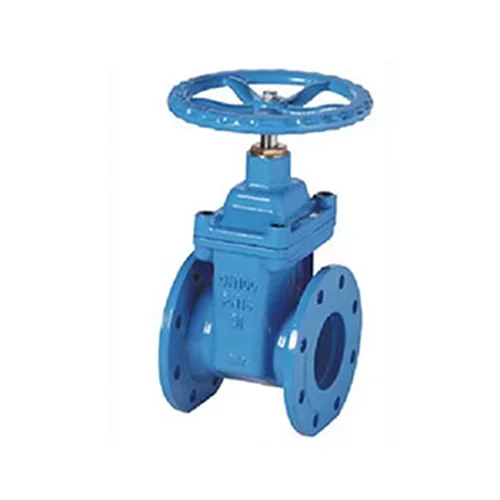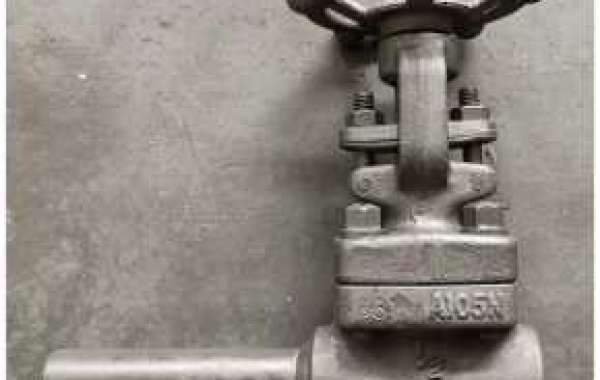Today, Kaiwen will introduce the structure of the gate valve body, the flow channel, and the determination of the size of the middle cavity. Interested partners will go and see it together.
(1) The flow path of the gate valve body
The flow path of the gate valve body can be divided into two types: full-bore type and reduced-bore type. The minimum channel diameter of the full diameter gate valve body is specified in the standard. The diameter of the flow aperture is smaller than that of the full-diameter gate valve channel, which is called the reduced diameter type. The flow channel is tapered, a kind of non-uniform diameter reduction. The diameter of the inlet end of this type of valve is basically the same as the nominal diameter, and then gradually narrows to the minimum at the gate valve seat.
The gate valve adopts a reduced diameter flow channel (whether it is a tapered tube-shaped non-uniform diameter reduction or uniform diameter reduction), its advantage is that the valve of the same specification can reduce the size, opening and closing force, and torque of the gate; its disadvantage is the flow resistance. Increase, pressure drop, and energy consumption increase, so the shrinkage hole should not be too large. For the non-uniform diameter reduction of the tapered tube shape, the ratio of the inner diameter of the valve seat to the nominal size is usually 0.8 to 0.95. For a reducing valve with a nominal size smaller than DN250, the inner diameter of the gate valve seat is generally one step lower than the nominal size; for a reducing valve with a nominal size equal to or greater than DN300, the inner diameter of the gate valve seat is generally two steps lower than the nominal size. The uniform reduction type is usually used in large-diameter low, medium pressure, or high-pressure valves, and the size of the reduction should be in accordance with the relevant standards.
(2) The structure of the gate valve body
The structure of the gate valve body is determined by the connection between the valve body and the pipeline, and the valve body and the valve cover. As far as the manufacturing method is concerned, there are casting, forging, forging welding, casting welding, and tube sheet welding. Usually, for economic reasons, gate valves with a nominal size equal to or greater than DN50 are cast, and gate valves smaller than DN50 are forged. But with the development of modern casting and forging technology, this limitation has been gradually broken through. The forged valve body of the gate valve has developed to the direction of large diameter, while the cast valve body is gradually developed to the direction of small diameter. Any kind of gate valve body can be forged or cast, which should be determined according to the user's requirements and the manufacturing methods possessed by the manufacturer. Tube-sheet welded valve bodies are usually used in large-diameter, medium, and low-pressure valves.

1) Cast valve body. The gate valve body and the bonnet are flanged cast bodies. Gate valve non-circular bonnet flange (usually oval or square) is used for valves with nominal pressure less than or equal to PN20 (or CL150) and valves with nominal size less than or equal to DN65 (NPS2¼2); The bonnet flange is used for valves with nominal pressure equal to or greater than PN50 (or CL300). The connection end between the valve body and the pipeline of the high temperature and high-pressure valve is usually butt welded. The gate valve body and the bonnet adopt the casting valve body connected by the internal pressure self-sealing type, and the connection end can also adopt the flange. This valve body is mostly used for high-pressure gate valves with nominal pressure equal to or greater than PN150.
2) Forged valve body. There are four types of connection ends of typical small-diameter forged valve bodies: internal thread, socket welding, flange (full forging or butt welding), and butt welding. The connection between the gate valve body and the bonnet also has four types: thread, flange, welding, and pressure self-tightening.
3) Forged welded or cast welded valve body. For valves that have difficulties in the overall forging process and are used on important occasions (such as nuclear power plants), the valve body of the gate valve can be forged and welded. Available cast-welded structures for which integral casting cannot meet requirements.
4) Tube sheet welded valve body. The valve body of the tube-sheet welded structure is generally suitable for large-diameter valves with a nominal pressure less than or equal to PN50 (CL300), as shown in Figures 4-15. This kind of valve body has the characteristics of lightweight and easy processing of the inner cavity. Still, special attention should be paid to the arrangement of the reinforcing ribs in the design to prevent the body cavity from being deformed after being subjected to internal pressure.
(3) Determination of the cavity size of the gate valve body
For the recommended gate valve body cavity size, the ratio of the long axis A of the ellipse to the nominal size DN of the valve body is roughly in a parabolic relationship; the ratio of the long axis A to the short axis B is in a similar parabolic relationship.
Therefore, as long as the diameter of the valve body is determined, the size of the central cavity of the oval valve body of the gate valve can be obtained. The size of the middle cavity of the wedge gate valve body can generally be determined according to the method of machining allowance for the maximum diagonal size of the gate.
Well, the above is all about the structural design of the gate valve. The flow path of the gate valve body can be divided into the full-bore type and reduced-bore type; the structure of the gate valve body depends on the valve body and pipeline, valve body, and valve cover. As for the determination of the cavity size of the gate valve body, as long as the diameter of the valve body is determined, the cavity size of the oval valve body of the gate valve can be obtained. Hope the above content is helpful to you, see you next time.








